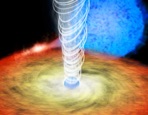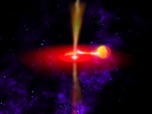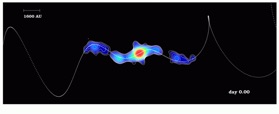Understanding multi-wavelength rapid variability: accretion and jet ejection in compact objects

Issi-BJ team meeting 2017-2018
The study of fast variability of compact objects, in particular galactic X-ray binaries, has in the past few years shifted in focus and technique. Earlier we had plenty of observational information in the X- rays, thanks to the RossiXTE satellite, but it was a heroic effort to obtain fast timing observations at longer wavelengths, due to the non-availability of suitable instrumentation. The situation has now reversed, as the RossiXTE mission was terminated and more and more fast-timing capabilities are being added to optical and infra-red observatories. At the same time, the radio coverage that was at best patchy in the past is now easier to obtain. Starting from 2016, fast timing in X-rays will again be possible through the Indian multi wavelength satellite Astrosat, launched in 2015 September. As the recent outburst of a bright peculiar transient, V404 Cyg, has shown, it is now possible to coordinate major facilities throughout the world to obtain multi-wavelength coverage, which is essential to understand the nature of the emission and its variability, and hence the underlying physics. We propose an International Team that will discuss both existing results and future observational programs in order to summarise the current status of our understanding and devise projects to coordinate observational efforts in a manner to maximise their scientific output.
abstract

For further info, contact the Team Leader Tomaso Belloni



